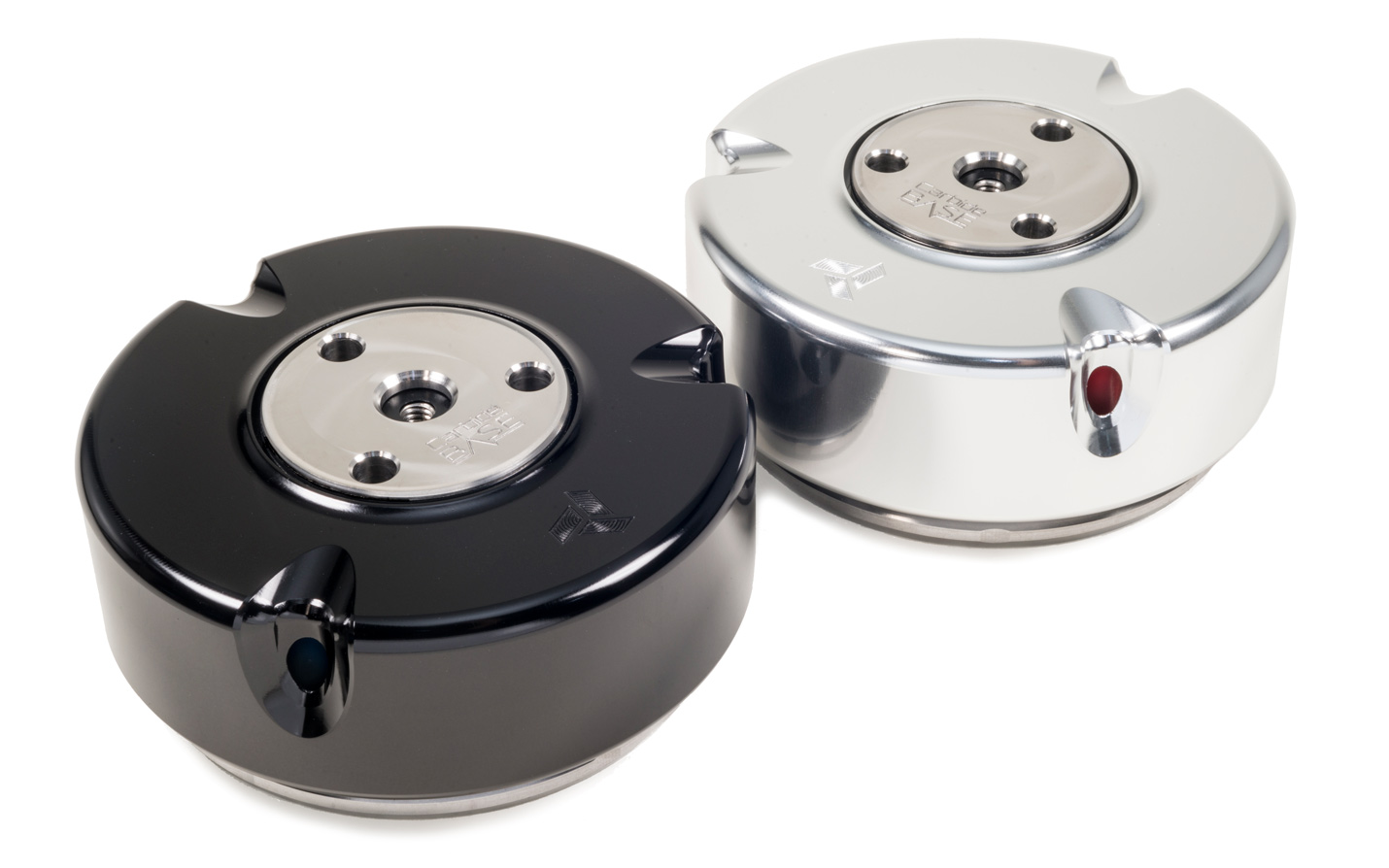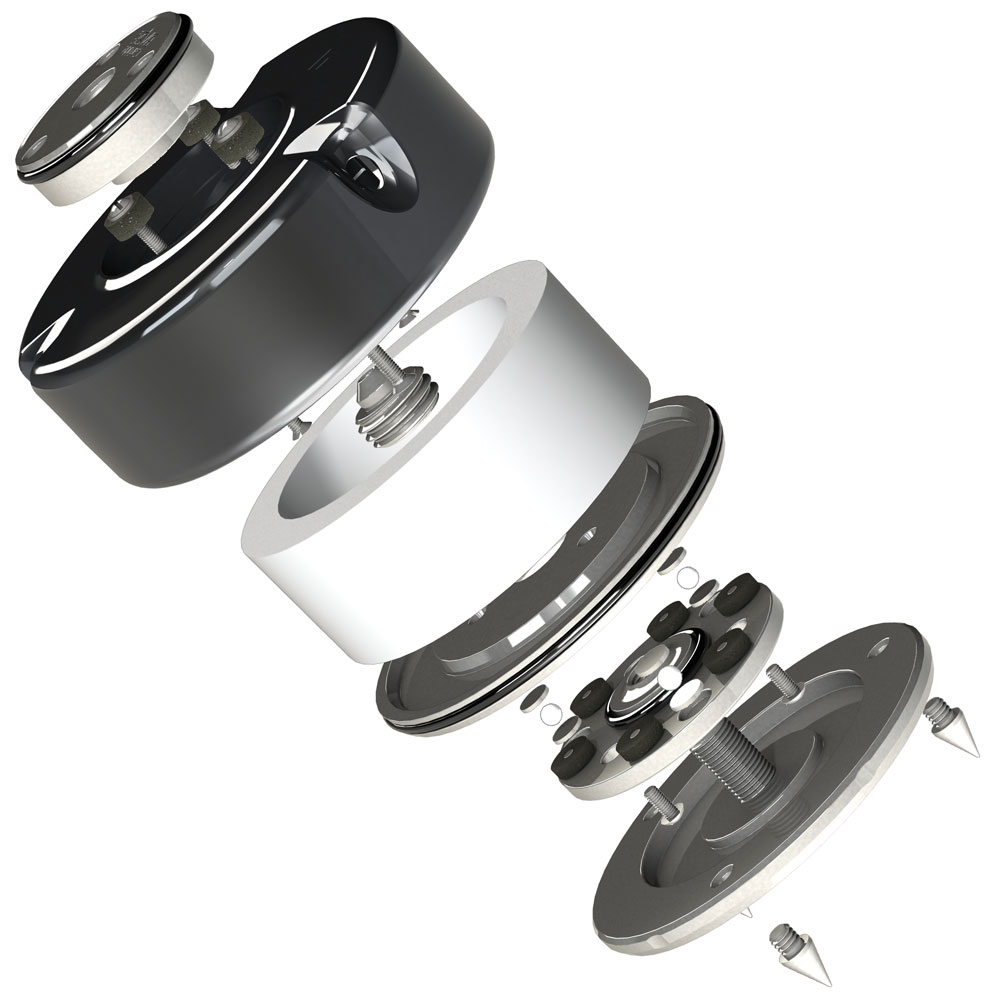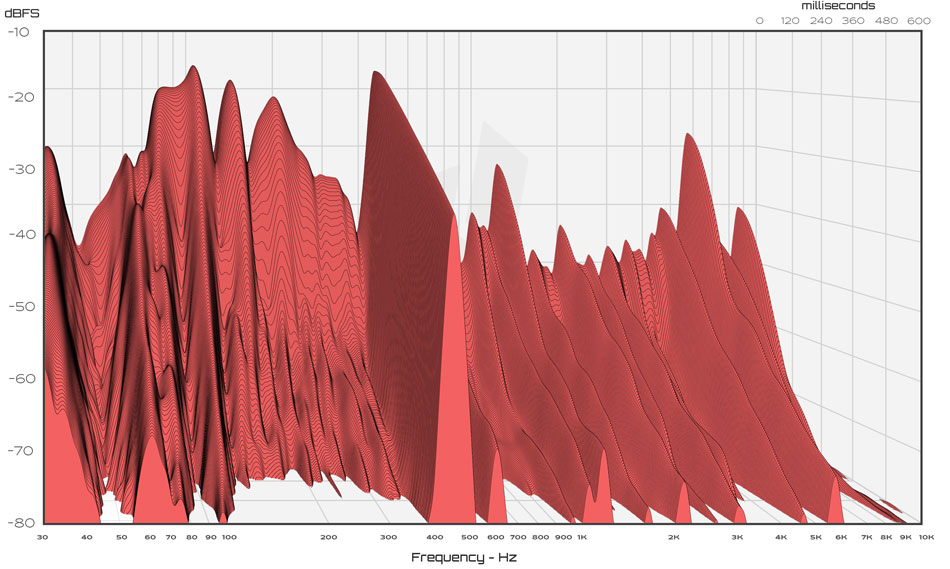
21 Feb Introducing Evo Version of Carbide Base
Carbide Audio introduces the new Evo update to the Carbide Base audio footer. Far from a simple evolution, every part except for the internal ViscoRing™ was redesigned to further enhance vibration control performance.
Improved Coupling
Improved coupling better allows low amplitude vibrations to pass into the device to be dissipated as heat. The following changes were made to improve coupling:
- A new austenitic (i.e. non-magnetic) stainless steel section was inserted into the top center upper housing of the footer. The high hardness and inherent damping ability of steel provides an ideal platform for supporting equipment.
- A ridge was machined into the top section’s perimeter to reduce the surface area that contacts the underside of equipment. Behind the point of a spike tip, the line of a ridge provides the next best coupling interface with the added benefit of improved stability. Spikes are still included to facilitate directing one spike upward for maximum engagement to the bottom of equipment.
- A larger ridge was machined into the perimeter of the footer’s bottom surface to sufficiently distribute the load for use on hardwood floors.
Updated Lower Isolation Stage
Updates to the lower ball bearing isolation stage better allow small horizontal footer movements in response to low amplitude vibrations – a critical component for the isolation of micro vibrations. The following changes to were made to the lower isolation stage:
- Twice as many viscoelastic elements are utilized to further improve horizontal damping.
- The zirconia ball bearings utilized in the lower section are 50% larger in diameter. This minimizes indentation of the flat hardened steel bearing raceways which the bearings roll on, thereby reducing rolling resistance.
Progressive Shape Factor
Our patent pending Progressive Shape Factor technology has further evolved. As the ViscoRing™ bulges under compression, ridges within the housing progressively brace the bulging surfaces more gradually as the load initially increases. This results in better isolation performance when supporting equipment on the lightweight end of the weight range for a given ViscoRing™.
While performance in the critical bass and midrange frequencies is similar, the high frequency performance has improved with the updated Evo version.
Horizontal vibration energy transmitted from a 2-way loudspeaker into a 13.6 kg (30 lbs.) weighted aluminum plate placed on top of the loudspeaker. Measurements were taken with the plate on 4 floor spikes and then with the plate on 4 of the Evo version of the Carbide Base footers. Super Light ViscoRings™ were used. Horizontal acceleration was measured with a ACH-01 sensor, 10 dB gain, using 30 Hz to 10 kHz log swept sine excitation.




